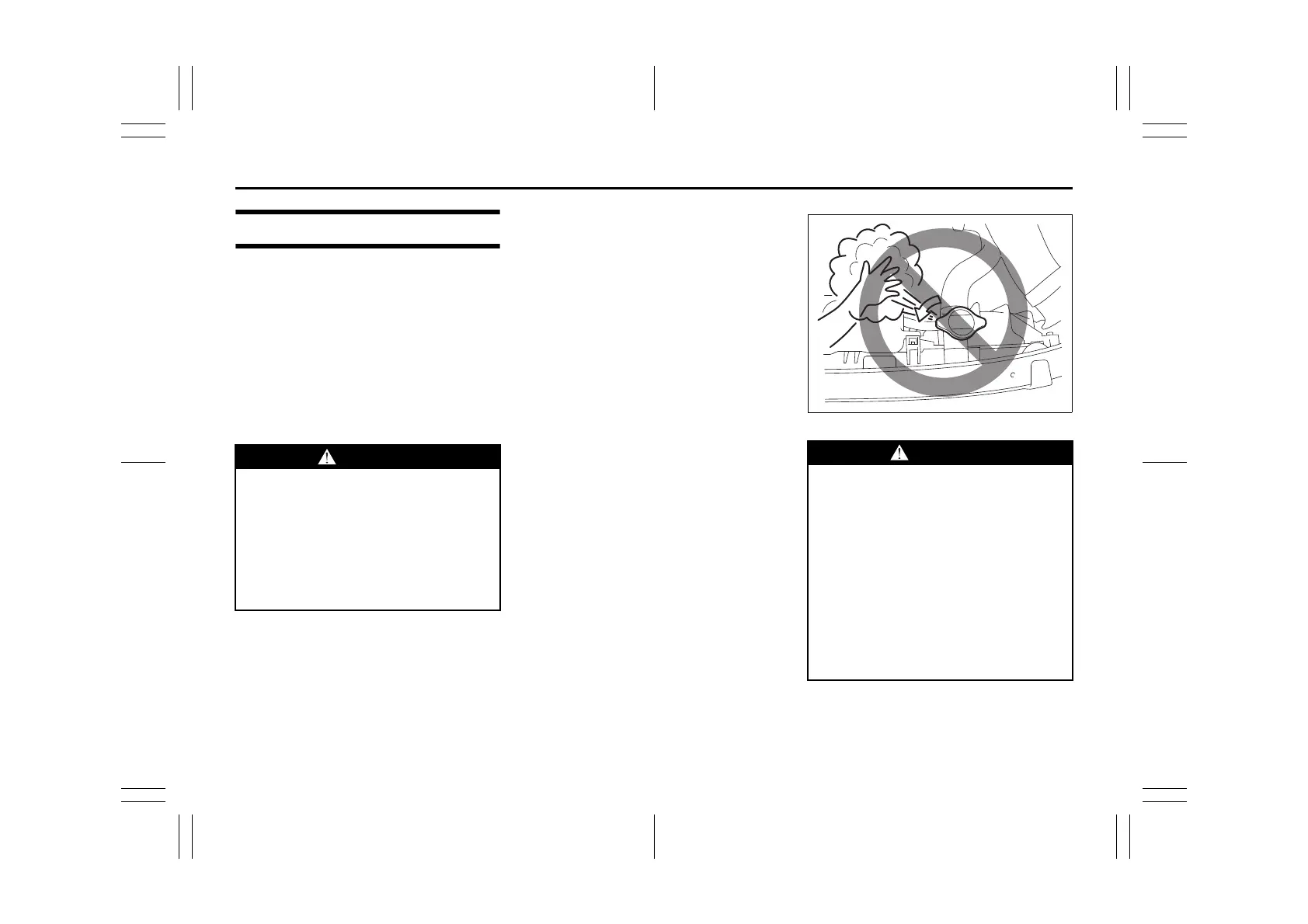7-12
EMERGENCY SERVICE
52SS0-01E
Engine Trouble: Overheating
The engine could overheat temporarily
under severe driving conditions. If the high
engine coolant temperature warning light
comes on as overheating during driving:
1) Turn off the air conditioner (if equipped).
2) Take the vehicle to a safe place and
park.
3) Run the engine at a normal idle speed
for a few minutes until the high engine
coolant temperature warning light goes
off.
If the high engine coolant temperature
warning light does not go off:
1) Turn off the engine and check that the
water pump belt and pulleys are not
damaged or slipping. If any abnormality
is found, correct it.
2) Check the coolant level in the reservoir.
If it is found to be lower than “LOW”
line, check radiator, water pump and
radiator hoses for leakage. If leakage
that may cause overheating is found,
do not run the engine until these prob-
lems have been corrected.
3) If leakage is not found, carefully add
coolant to the reservoir and then the
radiator, if necessary. (Refer to “Engine
Coolant” in “INSPECTION AND MAIN-
TENANCE” section.)
79J007
WARNING
If you see or hear escaping steam,
stop the vehicle in a safe place and
immediately turn off the engine to
cool it. Do not open the hood when
steam is present. When the steam
can no longer be seen or heard, open
the hood to see if the coolant is still
boiling. If it is, you must wait until it
stops boiling before you proceed.
WARNING
• It is hazardous to remove the radia-
tor cap when the water temperature
is high, because scalding fluid and
steam may be blown out under
pressure. The cap should only be
taken off when the coolant tem-
perature has lowered.
• To help prevent personal injury,
keep hands, tools and clothing
away from the engine cooling fan
and air-conditioner fan (if
equipped). These electric fans can
automatically turn on without warn-
ing.
